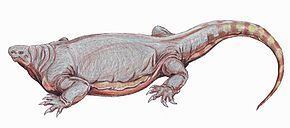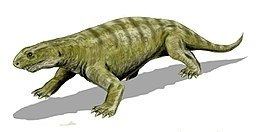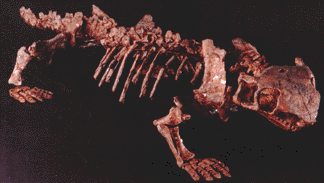Kingdom Animalia Phylum Chordata Rank Family | Clade †Caseasauria Higher classification Synapsid | |
 | ||
Similar Synapsid, Cotylorhynchus, Caseasauria, Therapsid, Casea | ||
Caseidae is an extinct family of synapsids from the Carboniferous and Permian period. It was a widespread group of very primitive herbivorous, possibly aquatic synapsids, which appeared during the late Carboniferous and persisted until the late middle Permian.
Contents

Characteristics

All caseids, whether modest or enormous, are characterized by small cervical vertebrae, bulky, barrel-shaped bodies and relatively massive limbs. Although ranging in size from 1–5.5 metres (3 ft 3 in–18 ft 1 in) in body length, caseids were surprisingly conservative in their skeletal anatomy and body proportions. All were large animals with small heads and barrel-like bodies. Some, like Angelosaurus and Cotylorhynchus, which exceeded 4 meters long and were the largest of the pelycosaurs, may have been aquatic foragers, relying on their paddle-like limbs to swim.

Recent studies on caseid ribs suggest that the animals may have been aquatic, and possibly possessed a diaphragm to assist their breathing. It was less efficient than that of their modern mammal relatives, being capable of limited costal ventilation. It likely relied on support from the animal's abdominal musculature.
Skull

The caseid skull is distinctive in the presence of large temporal openings, enormous external nares (probably to house some kind of sensory or moisture-conserving organ), and large pineal opening, and a snout or upper jaw that dramatically overhangs the tooth row to form a forward projecting rostrum. The external surface of the skull is sculpted with rounded deep pits and sometimes crevice-like depressions. The marginal teeth are quite similar to the teeth of pareiasaurs. In contrast to most other synapsids, except Edaphosaurus, and as befits the herbivorous lifestyle, the teeth are remarkably uniform. There is a general reduction in the number of marginal teeth and cheek teeth.

